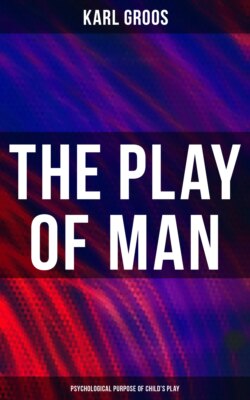Читать книгу The Play of Man - Psychological Purpose of Child's Play - Karl Groos - Страница 23
II. Playful Use of the Motor Apparatus
ОглавлениеIn this new section we by no means cut loose from what is sensory in a subjective sense, for of course we become conscious of our own movements only through the sensory paths of sight and what is collectively called touch, chiefly sensations of contact, and tendon and joint sensations. Yet from an objective standpoint we must enter upon the investigation of an entirely new province, where we shall be concerned not so much with the senses as with the manifold co-ordinated muscular movements of which our bodies are capable, and which are necessary or at least useful for the accomplishment of the tasks of life.
Since these movements are progressively acquired, the child’s first efforts can hardly be said to be voluntary. Many that are instinctive and automatic must be repeated over and over before voluntary ones come, for will implies an image which is a memory picture of the movement to be made. Preyer thinks that no intentional movements are made before the end of the first quarter.156 Vierordt, indeed, says that their development is gradually progressive. “All indications point to the arm as first becoming obedient to volition, and the sucking movements, too, seem early to lose their reflex character. Then follow intentional movements of the head and neck and some groups of face muscles, and finally those of the lower limbs, which as late as the sixth month still move in the most haphazard manner.”157 Playful experiment then promotes this acquisition of control over the bodily movements by the will, and strengthens and renders it permanent after it has been acquired.
Playful movements naturally fall into two great subdivisions, namely, those belonging to the organs as such and those directed toward other objects in connection with such organs—a distinction already familiar to us in our study of the production of noises and tones. We will now consider the first of these divisions, the most important phenomenon of which is locomotion.
